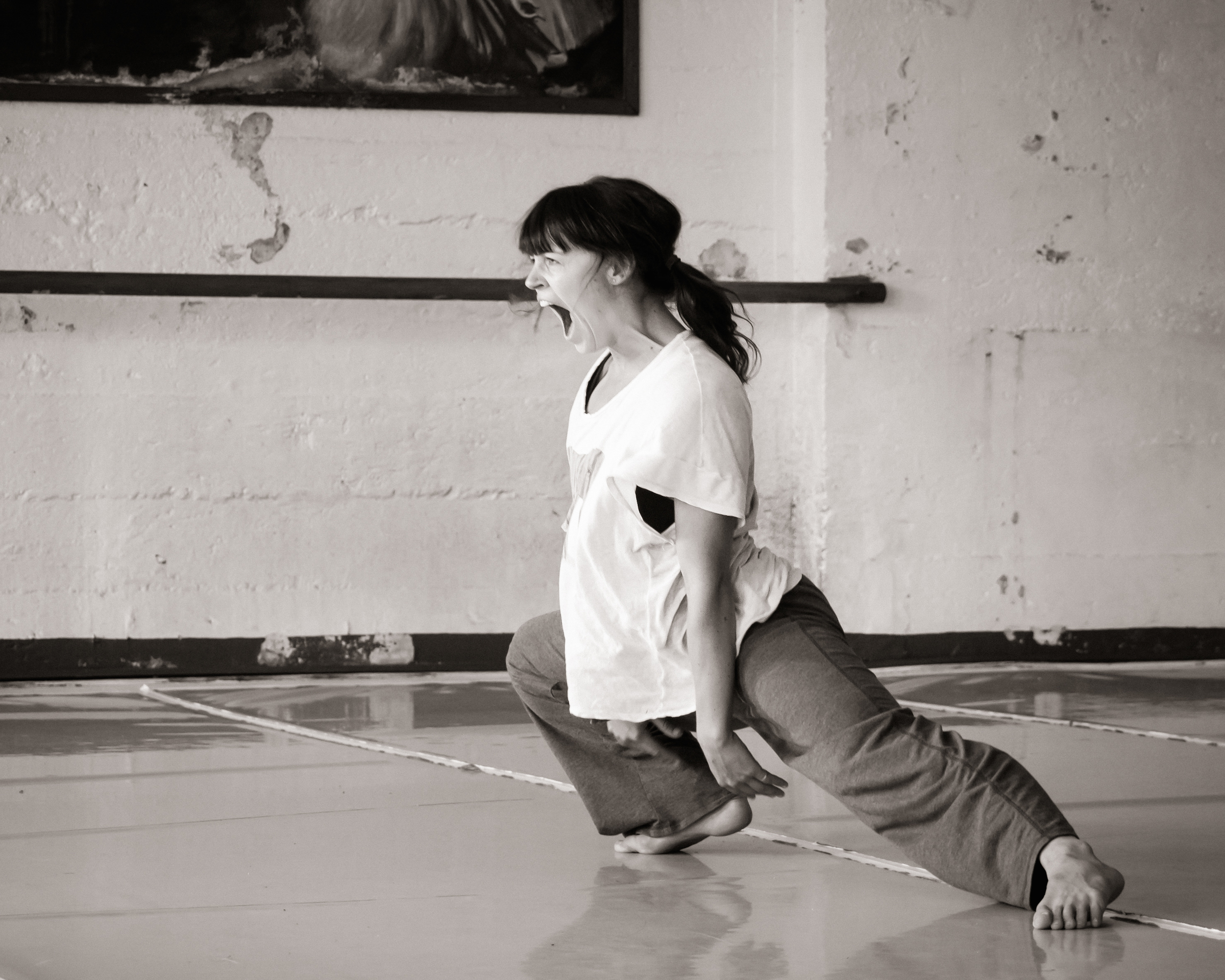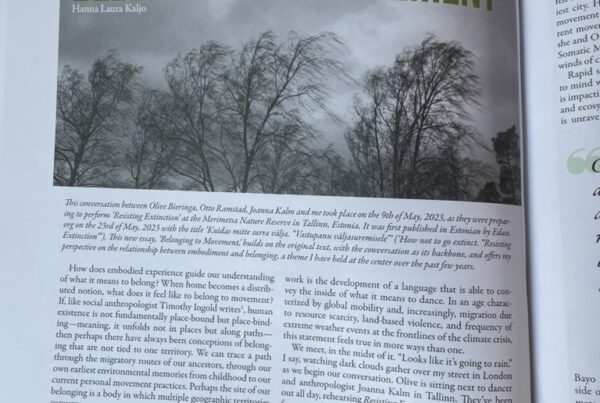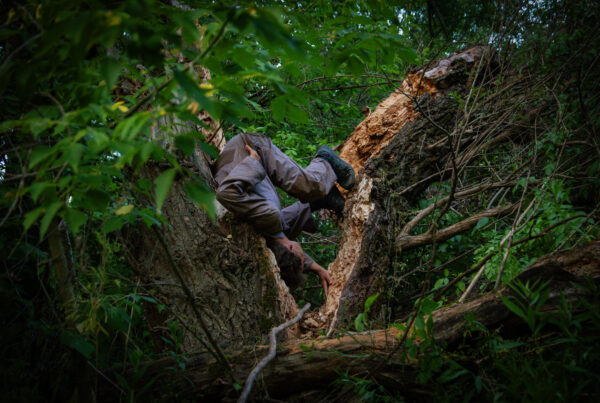Author: Val Smith
Source: Theater Review
Date: June 6 2014
At the opening of Footnote New Zealand Dance’s new season of original works by New Zealand choreographers at the Herald Theatre in Auckland, NOW 2014, the title of this new choreographic initiative had me wondering if the intended angle of marketing for such a platform might be to foreground current and contemporary innovative approaches to choreographic practice (?).
The three works presented were Depends on You by Craig Bary, Thin Air by Lyne Pringle, and Low by Olive Bieringa and Otto Ramstad of The Body Cartography Project.
Depends on You was a reworked excerpt from the full length Straight Laced which premiered earlier this year. It felt to me like a partially formed sentence perhaps best comprehended within the context of the full work. The partnering was seductive and sensitive but perhaps a little predictable in terms of a choreographic vocabulary.
How as dance makers do we deal with the trace of choreographers’ ideas and methods that we have previously encountered in working relationships?
I was expecting from Depends on You a personalised take on the struggles of coming to terms with being a gay man in a predominantly homophobic society. Disappointingly though, I couldn’t find a way into the body of the choreography to really connect with each character’s individuality, and found the depiction of the characters to be somewhat two-dimensional. The push for a narrative in this social commentary overshadowed the potential input of the dancers; it felt like there was no space in the choreography for these highly skilled performers to fully engage psychologically or intuitively within their given roles.
As Sam Trubridge has already discussed in another review of NOW 2014, Thin Air by Lyne Pringle deals with environmental issues from the perspective of >>concern<<. Words on cloth are safety-pinned to the formal suits worn by the dancers, somewhat like activist patches that signal a political angle on various common human responses to climate change and the seriousness of ozone depletion (my interpretation). Like Trubridge, I found myself questioning the use of didactic signposting – perhaps overstating a well-worn moralistic viewpoint. In particular I question the representational use of words when paired with performers-as-stereotypes in the choreographic form, as I feel like language tends to dumb down the complexity of the body as a field of vast intelligence. Whilst there was a sense of humour and playfulness around the labelling of the various behavioural responses – ‘denialist’, ‘alarmist’, ‘business as usual’ – does this capture a useful interpretation of our subjective strategies for dealing with the notion of environmental crisis? The dancers appeared to be feeling restricted in the improvisational tasks offered by this work, perhaps limited by the singular descriptive identifiers assigned to them.
Does combining dance with verbal language in this way limit our potential readings of the physical language being communicated through dance?
The saving grace of this work for me was the ending image where ideas, visions and beliefs are plucked from the performers’ minds, mapped through delicate little gestures and articulations and then flicked out into the world like a prayer for peace, creative imagination and hope.
In the third approach to developing a choreographic language presented in this programme, Low by Olive Bieringa and Otto Ramstad presents a structure in which the dancers are plainly fully invested in the physically motivated material (as opposed to the more conceptually driven previous works). In an interview with Radio New Zealand [here] Bieringa describes how the anatomy of the pelvis was the starting point for the development of Low, also emphasising a valuing of the agency of the dancers in the choreographic process. As suggested in the programme notes, this work engages with viscerality and it is certainly a sensuous and guttural response that I experience from this work. I want to simply say – erotic pelvic intelligence.
And then I want to babble about the contagious power and energy in these movement investigations. I want to explore for myself how attending to the pelvis can lead to the open sensitised embodiments that I saw on the stage with Low. I also want to somehow capture for you the generosity of the dancers’ responsivity with the audience, and the resonant affect of the choreographic material of bodily sounding which creates a strange emotive feeling of being stirred inside my stomach, intestines, sexual organs.
Low is a sexy and intriguing piece of choreography to be party to. The work foregrounds choreography as a conduit for social research. It socialises unique methods for empathising guttural feeling-tones through the performance space as artistic practice.
Minnesota-based choreographers, Bieringa (ex-pat Kiwi)and her partner Ramstad, are channelling into this country highly specialised and valuable bodily and performative knowledge. They bring with them an exciting contemporary approach to choreography-as-research which exemplifies what I see to be a potential direction for Footnote’s NOW program.
Will NOW contribute to the gaping lack of support in the New Zealand Contemporary Dance milieu for research based choreographic practices?
With growing numbers of local dance practitioners developing innovative approaches to dance-making, yet no funding support from Creative New Zealand for research based projects, will Footnote spearhead the much needed infrastructural support for this area of choreographic development happening in Aotearoa? Or will our research-motivated artists continue to move offshore in search of artistic communities who welcome their experimental ways of working?
In order to carve a line of distinction from Footnote’s own Made in New Zealand programme, perhaps NOW, in reflecting on its first season, might spot this potential for emphasising a research based approach to dancemaking. Is it timely that NOW aligns New Zealand’s contemporary dance scene with choreographic developments happening internationally.
An honoring of this show goes to the Footnote dancers themselves, in this case: Emily Adams, Emma Dellabarca, Olivia McGregor, Manu Reynaud and Luigi Vescio. Their passionate commitment brings to life each of these three works. The unique skills of these dancers, as movers, improvisers and performers, is what we come to see, just as much as the choreography on show. ‘Olivia’ and ‘Emma’ for example become like choreographic works into which we invest and engage our own passionate involvement in, and dialogue around the event. It is the nature of the work included in this first season of NOW, particularly with Low, that allows space for us to really see these dancers as highly individual specialised artists.



